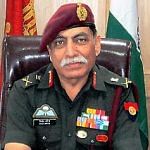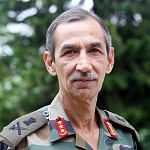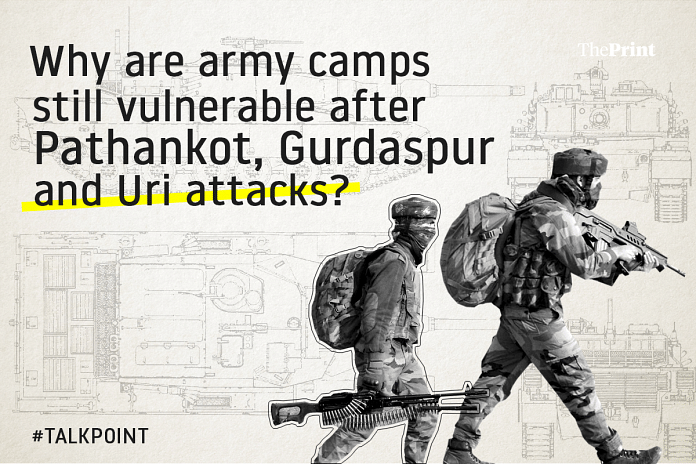Heavily armed Jaish-e-Mohammad terrorists struck the Sunjuwan Army Camp outside Jammu in the early hours of Sunday. Five soldiers and one civilian have been killed in the military operation at the camp.
ThePrint asks: Why are army camps still vulnerable after Pathankot, Gurdaspur and Uri attacks?
These attacks are a strategy to discourage people from joining the Indian Army

Lt Gen. Vinod Bhatia (Retd)
Director of CENJOWS (centre of joint warfare studies) and former DGMO
There is an established pattern to the attacks.
At the strategic level, Pakistan engineers an attack to find space when it is losing ground. This is the second high-visibility attack in the Kashmir Valley in 15 months. This shows that Pakistan is losing space in Kashmir.
Another major issue is the similarity between the Gurdaspur, Pathankot and Sunjuwan attacks. The terrorists came in at night and attacked during daylight hours. They also have a tendency to attack soldiers or those who have recently joined the Indian Army. This is done to discourage people from joining the Army.
The main problem is that army combat uniforms are easily available in the market. We have requested the state to monitor the sale of these uniforms. Even state and central police officers don these uniforms, and it becomes very difficult for the Army to distinguish. By the time they manage to spot outsiders, it is too late, often during the attack.
As per instructions, there shouldn’t be any construction within 900 metres of an army cantonment. However, there are encroachments all around the camp settlement of Rohingya workers. Tactically, that creates another problem. Overground workers of Jaish-e-Mohammad or Lashkar-e-Taiba try to get support from these local bases. The state government must strictly enforce the no-settlement policy.
Political statements of ‘Pakistan Zindabad’ are still being made in the J&K assembly. Then there is the FIR against Maj. Aditya Kumar in the Shopian case. Things like these affect the morale of the soldiers.
24×7 readiness and 100 per cent capability to thwart such attacks can rarely be achieved.
 Lt Gen. Syed Ata Hasnain (Retd)
Lt Gen. Syed Ata Hasnain (Retd)
Former GOC of Srinagar-based 15 Corps, associated with the Vivekananda International Foundation and the Institute of Peace and Conflict Studies
New York, Paris, Brussels and London continue to remain vulnerable, even after multiple attacks by small teams of highly motivated and religiously radicalised terrorists operating as suicide squads. It proves one thing, which the public has not fully understood — that the kind of conflict situations being presented before the world are no longer conventional in nature.
These are hybrid conflicts where a combination of different domains from the spectrum of conflict like military, diplomatic, economic psychological etc are used together. Suicide terror (where one is prepared to fight and die while killing others in the conflict) is at the core centre of the strategy used in these.
Through this form of conflict, weaker nations or parties can engage much larger ones, force them to expend a great deal of resources, time and energy to carry out counter-operations, and yet remain vulnerable.
Emplace this scenario on the Indian security environment, and it will be realised that we are the oldest victims of hybrid warfare. Pakistan’s so-called non-state actors are all state supported, and continue to target the Indian Army and other security forces with impunity. It’s not a face-to-face conflict, but one involving sneak actions to impose a heavy toll of casualties. The most that any state can do under such circumstances is to attempt to secure itself through higher state of readiness, better intelligence, effective surveillance at the border and along the perimeters of military camps.
In a 24×7 readiness and hundred percent capability to thwart such efforts by the adversary can rarely be achieved. There will be slippages, but what can definitely be achieved is minimisation of the effectiveness of the suicide squads to inflict damage.
However, in our case, despite 28 years of the sub-conventional conflict in J&K, the realisation of the nature of conflict has seldom dawned. Post-Pathankot, the Lt Gen. Campose Committee Report outlined a series of measures such as construction of boundary walls around important and vulnerable garrisons, along with a host of other measures. It does appear that even in as important a vulnerable area as Jammu, these are still in stages of approval. It is understandable that government procedures for such projects are slow, but in matters of security, a certain priority needs to be outlined to have equal chances for security forces to prevent such sneak attacks by suicide squads.
Even more importantly, in hybrid conflicts, the response need not be purely in the same domain as the one in which we have suffered. A military response may not alone be effective. What is necessary is the formulation of a hybrid response capability, combining diplomatic, economic, political and psychological actions to support the military response. It’s not past the understanding of Indian strategists, and they are fully aware of the nuances of such response. It’s a matter of time before more effectiveness will be witnessed in the counter measures that India will respond with.
Soldiers cannot be pulled out from the line of control to start protecting garrison in the rear.
 Lt Gen. D.S. Hooda (Retd)
Lt Gen. D.S. Hooda (Retd)
Former General Officer Commanding-in-Chief of the Indian Army’s Northern Command.
After the Sunjuwan garrison attack, it is obvious that questions will be raised on the vulnerability of Army camps. However, it would also be unfair to make a broad statement that all Army camps can be easily breached by terrorists. There are thousands of military camps in Jammu and Kashmir, a large number of which are co-located with civilian areas and alongside highways. Houses have come up alongside perimeter walls of sensitive garrisons. These can help in close reconnaissance of the routine followed by sentries in the camps and identify weaknesses.
There are also limits on the number of persons that can be deployed for camp protection duties. The Army’s main task is to man the borders and support troops in the front lines. Soldiers can not be pulled out from the Line of Control to start protecting garrisons in the rear. These are some of the issues which impact security, but for which there are no simple answers.
However, the latest attack is also a grim reminder that we cannot permit lives of valuable soldiers to be lost in this manner. I think the answer lies in empowering soldiers with the latest technology for perimeter protection. A variety of integrated solutions combining sensors, night cameras and intrusion detection systems are available. A committee headed by Lt Gen. Philip Campose had submitted a comprehensive plan for garrison security in 2016. Unfortunately, there has been an inordinate delay in sanctioning the funds. This needs to be immediately implemented.
Compiled by Deeksha Bhardwaj, Journalist at ThePrint.




The Army is not as competent as it is said to be. Strong public support and blind adulation in the media create a false sense of confidence. By now – after Uri, Pathankot and numerous other attacks – they ought to have figured out how to guard their bases. In reality it is the jawans and young officers who pay the price. The senior leadership of the Army is not really able to come up with an effective strategy. By now the response from the Minister for Defense (who actually understands nothing about defense) is predictable – threaten revenge, then do a little pin-prick of a ‘surgical strike’ which does nothing to deter against the next attack. As Mohan Bhagwat said, the Army is not really ready for war so all this is just a tamasha. The only saving grace is that Pakistan Army is even worse shape than the Indian Army.
Simple solution:
Post/relocate babus (along with their families) holding and sitting on defense files especially those related to army and other security operations against terrorists/jihadists, in loosely fenced army camps in disturbed areas of J&K, till they clear the files favourably.
Babus will work at lightening speed.
Simple.